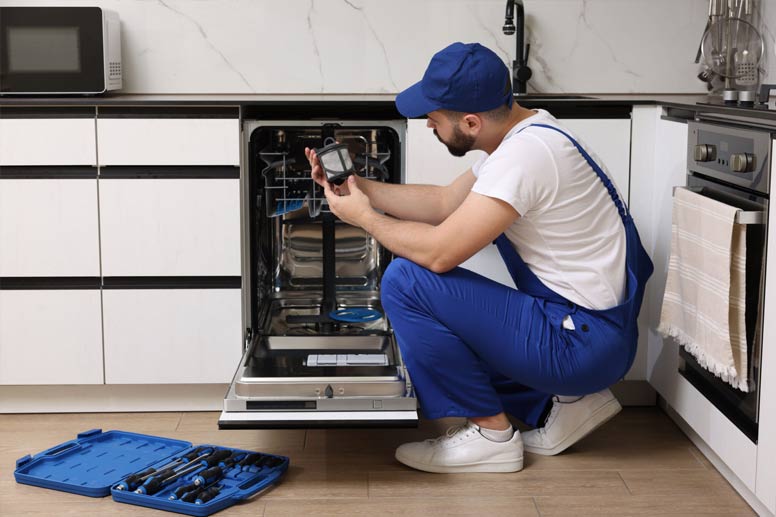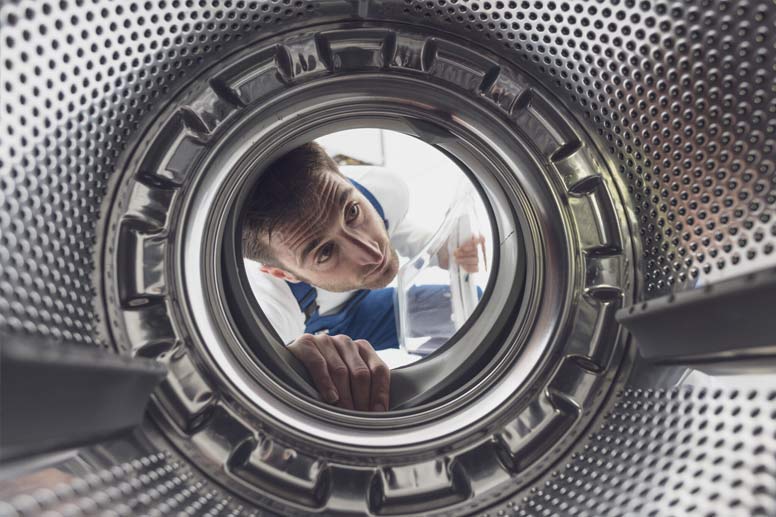How to Get An Appliance Repair Business Insurance?

Table of Contents
Are you wondering how to get appliance repair business insurance, what it covers, and how to choose the right policies for your needs?
In this series we have covered topics such as; how to start an appliance repair business, salaries, and how to get certified. This guide will walk you through everything you need to know about appliance repair insurance.
Running an appliance repair business, like all businesses, comes with its own set of risks. Accidental damage at a client’s home can lead to costly lawsuits. Having the right insurance protects your business at every stage.
Let’s understand how:
What is Appliance Repair Insurance?
Appliance repair insurance, also known as appliance repair business insurance, helps protect your business. It covers financial losses from accidents, damages, or legal claims. This ensures you can handle unforeseen incidents with confidence.
RELATED ARTICLE: How To Start An Appliance Repair Business in 2025?

Types of Appliance Repair Insurance Policies & Average Cost
1. General Liability Insurance
- Covers third-party injuries and property damage.
- Essential for situations like a customer slipping in your workspace or accidental damage to their appliances.
- Average cost: $67 per month or $807 per year
This policy helps cover medical costs and potential legal fees. For example if a client tripped over a cord while you are fixing their washing machine.
2. Professional Liability Insurance (E&O)
- Protects against claims of negligence or mistakes in your services.
- Ideal for situations like a repair that has caused more damage.
- Average cost: $74 per month or $886 per year
This coverage helps manage associated legal claims and repair costs. For example, If a dishwasher repair leads to a water leak.
3. Workers’ Compensation Insurance
- Required in most states if you have employees.
- Covers medical expenses and lost wages for employees injured on the job.
- Average cost: $254 per month or $3,054 annually
This policy covers their medical treatment and part of lost income. For example, if an employee injures their back while lifting a heavy appliance.
4. Commercial Auto Insurance
- Protects vehicles used for business purposes.
- Covers damages from accidents, theft, or vandalism involving your business vehicle.
- Average cost: $173 per month or $2,075 per year
In the case of a road collision, this policy would cover repair costs for your service vehicle.
5. Tools and Equipment Insurance
- Specifically covers your tools and equipment.
- Useful for replacing or repairing stolen or damaged gear.
- Average cost: $14 per month or $169 annually
If your tools are stolen at a job site, this policy quickly replaces them. This minimizes downtime and keeps your business running efficiently.
6. Umbrella Insurance
- Provides additional coverage when claims exceed the limits of your standard policies.
- Average cost: $81 per month or $977 per year
If a liability claim surpasses your general liability policy’s limit, umbrella insurance steps in to cover the remainder.
Please note: average insurance costs taken from insureon.com. Average appliance repair insurance cost depends on several factors. These include coverage limits, the number of employees, the size of the business, and its location.
Shop around different suppliers to find a suitable price for your needs. For state-specific regulations, refer to resources like Small Business Administration (SBA).
RELATED ARTICLE: How To Get Your Appliance Repair Certification in 2025?

Why Do You Need Appliance Repair Insurance?
Whether you’re a solo operator or manage a team, appliance repair insurance protects your business from financial risks. Here’s why it’s essential:
- Compliance with Contracts: Many clients and landlords require proof of insurance before working with you.
- Risk Mitigation: Covers potential damages, injuries, or legal claims.
- Credibility: Demonstrates professionalism and reliability to clients.
Step-by-Step Guide to Getting Appliance Repair Insurance
1. Identify Your Business Needs
Start by evaluating the risks associated with your business. Consider factors such as:
- The types of repairs you handle.
- Whether you operate out of a physical location or travel to clients.
- The number of employees you have.
- The value of your tools and equipment.
2. Determine the Necessary Coverage
Once you’ve assessed your needs, decide which policies are essential for your business. For most appliance repair businesses, the following are non-negotiable:
- General Liability Insurance
- Professional Liability Insurance
- Tools and Equipment Insurance
If you have employees or a company vehicle, include workers’ compensation and commercial auto insurance.
3. Compare Quotes from Providers
Shop around for the best rates by comparing quotes from multiple insurance companies. Another option is to work with a broker who specializes in small business insurance. When comparing policies, consider:
- Monthly premiums
- Policy limits
- Deductibles
4. Check for Bundled Policies
Many insurers offer bundled policies, such as a Business Owner’s Policy (BOP). This combines general liability and commercial property insurance at a discounted rate.
5. Verify the Provider’s Reputation
Ensure the insurance provider is reputable by checking:
- Customer reviews on platforms like Trustpilot
- Financial stability ratings from agencies like AM Best
- Support services offered
6. Purchase and Maintain Your Policy
Once you’ve selected a policy, complete the application process. Provide accurate information about your business to avoid coverage issues later. Keep your policy updated by:
- Adding new employees or vehicles.
- Adjusting coverage as your business grows.
7. Renew and Review Annually
Regularly review your insurance to ensure it aligns with your current business needs. Shop around for better rates or additional coverage options during renewal periods.

How Can Invoice Fly Help With Your Appliance Repair Businesses?
Running an appliance repair business involves more than just fixing appliances.
You need to consider managing clients, scheduling jobs, sending invoices, making sure you’re getting paid, and keeping your finances in order.
Discover how Invoice Fly can help you run your appliance repair business with ease.
Appliance Repair Business Insurance FAQs
Home appliance repair insurance protects homeowners against the cost of repairing or replacing household appliances. This can be because of mechanical breakdowns, normal wear and tear, or accidental damages.
Yes, even solo operators benefit from appliance repair insurance. For example, general liability coverage is needed if a client’s property is damaged during a repair. It also protects against lawsuits, ensuring your personal finances remain secure.
When selecting an insurance provider, consider these factors:
- Reputation: Check customer reviews and ratings.
- Coverage Options: Ensure the provider offers policies tailored to your business needs.
- Cost: Compare quotes from multiple insurers to find competitive pricing.
- Support: Choose a provider known for responsive customer service and claims processing.
Yes, many providers offer bundled insurance packages, such as a Business Owner’s Policy (BOP).
Home warranty coverages (or home warranty plans) typically include repairs or replacements for major household systems and appliances. Commonly covered appliances include:
- Appliances: Refrigerators, dishwashers, ovens, and washing machines.
- Systems: Heating, ventilation, and air conditioning (HVAC), plumbing, and electrical systems.
- Optional Add-ons: Pools, septic systems, and additional appliances may be covered for an extra fee.
